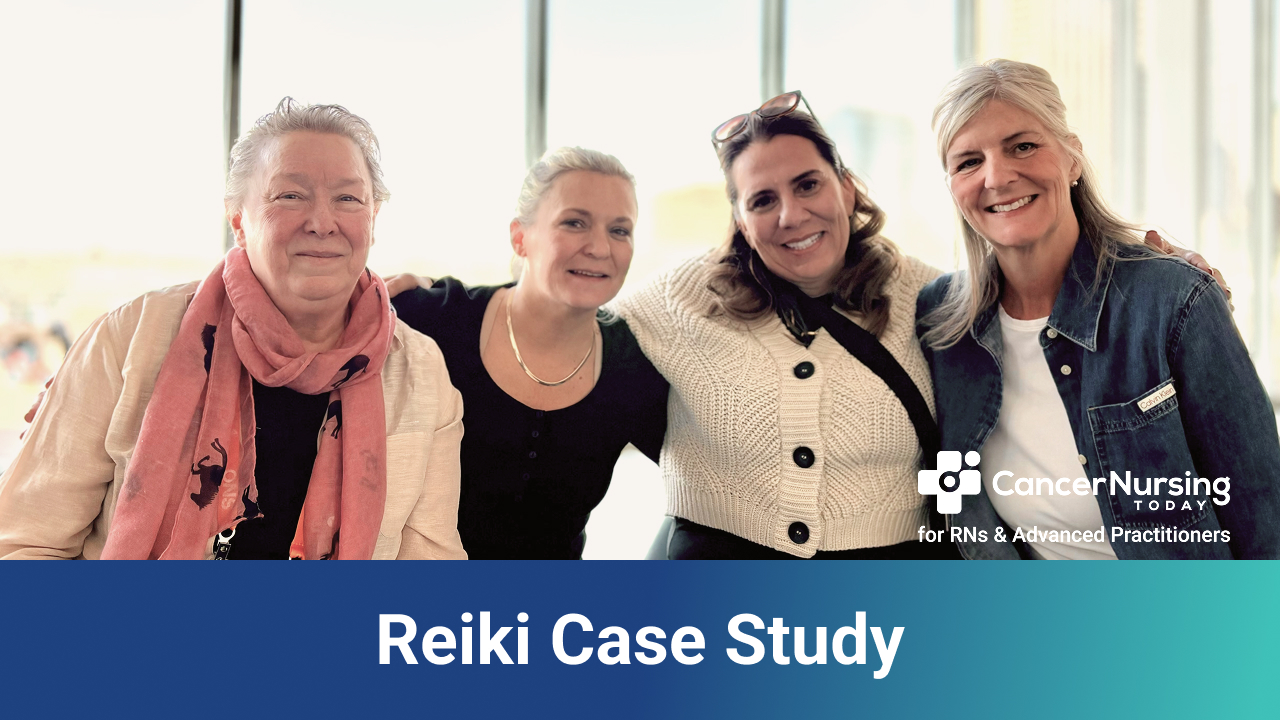GVHD
Advertisement
A nursing team from Tufts Medical Center discusses their case presentation on the use of Reiki in a patient with cGVHD.
Learn what oncology nurses should know about how it works, the FDA-approved products, legal considerations, and more.
Oncology nurses must be prepared to use non-stigmatizing, culturally sensitive communication about cannabis to manage GVHD.
The analysis shows that certain social factors may affect GVHD risk and severity.
Oncology nurses need to monitor these 2 distinct but interconnected complications after allogeneic stem cell transplantation.
Learn how machine learning models may be able to assist interdisciplinary teams with tailoring GVHD management.
The study revealed domains not represented in existing GVHD- or dermatologic-specific patient-reported outcome measures.
The condition is an "underdiagnosed gynecologic comorbidity" that often co-occurs with multiorgan chronic GVHD.
Previous research showed a potential connection between obesity and moderate to severe GVHD post-allogeneic SCT.
Oncology nurses need to be equipped to dispel common myths about smoking.
Learn how oncology nurses can offer education and smoking cessation resources to help patients reduce their risk.
Learn how ACCESS study data is informing patient-centered GVHD care and eliminating the donor access barrier for HSCT trials.
Recent research highlights the need for proactive interventions by oncology nurses.
If patients who smoke understand the pathophysiology, they may be more open to difficult conversations about cessation.
Stephen R. Spellman shares highlights from the results of the ACCESS trial, which was presented at the 2025 Tandem Meetings.
The study evaluated the safety and efficacy of ruxolitinib for treating chronic graft-versus-host disease after allo-HSCT.
Partially hydrolyzed guar gum, a soluble dietary fiber obtained from guar beans, was evaluated due to its butyrate content.
The Lee Symptom Scale for skin sclerosis was informed by patient interviews and feedback.
Patients with cGVHD appreciate the opportunity to connect with other individuals also navigating a cGVHD diagnosis.
Access to a multidisciplinary GVHD clinic with telehealth abilities improved care for patients with acute and chronic GVHD.




















 © 2025 Mashup Media, LLC, a Formedics Property. All Rights Reserved.
© 2025 Mashup Media, LLC, a Formedics Property. All Rights Reserved.